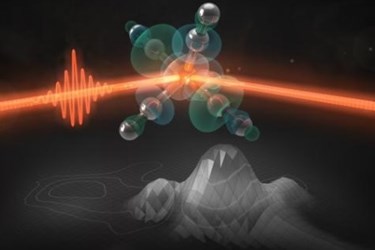Russian Scientists Devise Model To Create Anti-Matter With Lasers
By Jof Enriquez,
Follow me on Twitter @jofenriq

Russian researchers have created a model calculation on how to create matter and antimatter via ultrahigh-intensity laser pulses.
Recent developments in laser technology have allowed scientists to experiment with light-matter interactions that make it possible to create new states of matter and anti-matter, as predicted by the theory of quantum electrodynamics (QED).
High-intensity lasers are being used to excite electrons to increasingly higher energy levels to produce brand new particles, such as virtual electron–positron pairs. Some researchers have been combining powerful laser beams with particle accelerators to generate even more new particles and antiparticles. Others have focused on tuning vacuum cavities to create new states of matter.
One of the recent groups to perform QED testing, a research team at the Institute of Applied Physics of the Russian Academy of Sciences (IAP RAS) used a highly intense laser with a foil via numerical simulations to generate an electric field powerful enough to transform these new particles from "a virtual state, in which the particles aren't directly observable, to a real one," said Igor Kostyukov of IAP RAS.
To achieve this, the team needed to trigger a QED cascade, which begins with acceleration of electrons and positrons within the laser field, followed by emission then decay of high-energy photons.
As explained in the study abstract published in AIP Physics of Plasmas:
"The laser energy penetrates into the foil due to the effect of the relativistic hole-boring. It is demonstrated that the electron-positron plasma is produced as a result of quantum-electrodynamical cascading in the field of the incident and reflected laser light in front of the foil. The incident and reflected laser light make up the circularly polarized standing wave in the reference frame of the hole-boring front and the pair density peaks near the nodes and anti-nodes of the wave."
“We expected to produce a large number of high-energy photons, and that some portion of them would decay and produce electron-positron pairs,” Kostyukov said in a news release. “Our first surprise was that the number of high-energy photons produced by the positrons is much greater than that produced by the electrons of the foil. This led to an exponential – very sharp – growth of the number of positrons, which means that if we detect a larger number of positrons in a corresponding experiment we can conclude that most of them are generated in a QED cascade.”
Their experiment using a circularly polarized laser pulse with a foil has yielded new insights to the dynamics of electron-positron pair production. Next, they plan to experiment with lasers at higher intensities within a wider range of parameters.
“By analyzing the positron motion in the electromagnetic fields in front of the foil analytically, we discovered that some characteristics of the motion regulate positron distribution and led to helical-like structures being observed in the simulations,” added Kostyukov. “More practical applications may include the development of advanced ideas for the laser-plasma sources of high-energy photons and positrons whose brilliance significantly exceeds that of the modern sources.”
